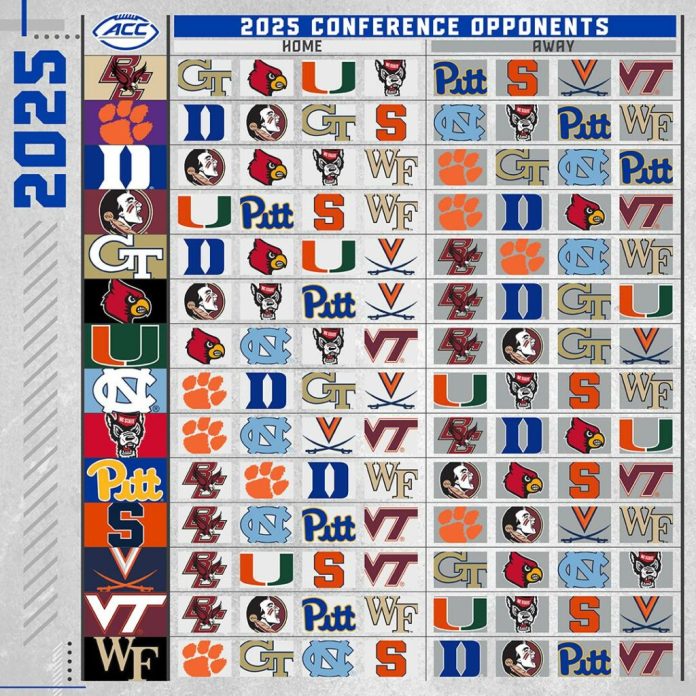Sports
By Greg Maresca, 10-3-25
The ACC’s expansion and new scheduling rules aim to boost playoff chances, but underscore the growing absurdity of college football’s geography and structure…
The Atlantic Coast Conference (ACC) has become college football’s latest exercise in gridiron gerrymandering. The ACC’s footprint now sprawls from Boston and Miami all the way to Salt Lake City and the San Francisco Bay, defying both geography and its own name.
In its ongoing quest to pad the schedule with more league matchups, the ACC’s coast-to-coast confederacy of confusion has pushed even farther west. The fact that the conference managed to rope in Stanford last year doesn’t mean it was a wise move. Stanford, along with the University of California, Berkeley (Cal), and Southern Methodist University (SMU), officially joined the ACC for football last August in an expansion that feels more like geographic improv than strategic planning.
Some argue the ACC’s footprint now resembles a farmer herding cats on a trampoline during an earthquake. The ACC is in search of not only relevance, but increased revenue. Television and streaming deals might drive revenue, but they don’t build rivalries, tradition, or enhance the soul of college football.
The ACC has formally approved an expansion of its football schedule to include a ninth conference game beginning in the 2026 season, marking a strategic alignment with the scheduling standards of the remaining Power Four conferences.
The vote described by ACC Commissioner Jim Phillips as “overwhelming” also institutes a new scheduling requirement mandating that each member school play a tenth annual game against an opponent from another Power Four conference. This strategic shift is designed to enhance strength-of-schedule metrics and improve positioning for the College Football Playoff (CFP).
“This decision reflects the leadership and forward-thinking commitment of our athletic directors,” Phillips stated. “It balances the broader goal of elevating the conference’s national competitiveness with the individual priorities of each program. It’s a clear signal of where the sport is heading and of our intent to lead that evolution.”
Rather than signaling a dramatic upheaval, the ACC’s scheduling decision represents a long-overdue recalibration in an intentional and strategic adjustment to better reflect the evolving landscape of collegiate athletics.
For years, the ACC stood apart from its peer conferences in maintaining an eight-game league schedule, a structure that increasingly placed its programs at a competitive disadvantage in strength-of-schedule evaluations and postseason considerations. By moving to a nine-game conference slate and mandating an additional Power Four non-conference matchup, the ACC is not only aligning with national standards but also demonstrating a proactive commitment to enhancing its football profile and positioning its member institutions for greater success in the College Football Playoff era.
In a sport increasingly shaped by strength-of-schedule analytics and media-driven matchups, the ACC’s pivot is both timely and necessary. It is no longer about catching up; rather, it is about stepping forward and embracing the future.
Still unanswered: how far can the ACC stretch geographically before the whole thing snaps like an overextended rubber band. Meanwhile, Notre Dame continues to haunt the conference like an ex-boyfriend with commitment issues. “We’re definitely together,” the ACC insists. “It’s just… complicated.”
If that doesn’t summarize the college football landscape, what does?

Mr. Maresca is a New York City native and a Marine Corps veteran residing in Flyover, America.
The views expressed in this commentary are those of the author and do not necessarily reflect the official position of Citizens Journal Florida









